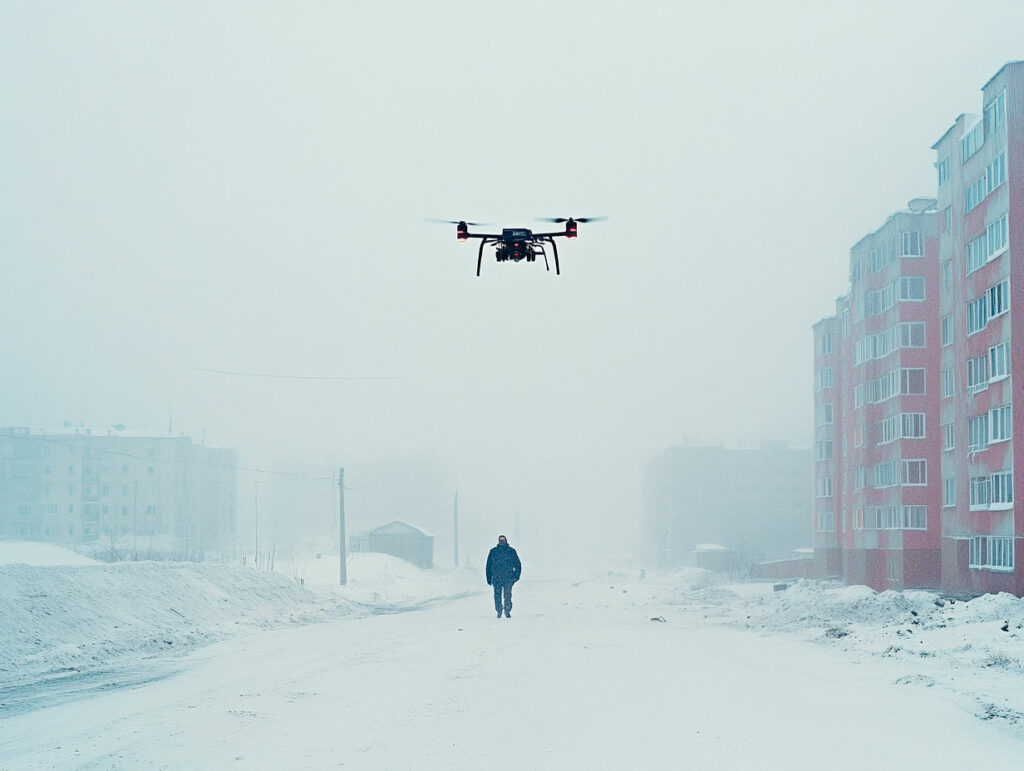
Detailed analysis of the massive use of drones in the Ukrainian conflict, their strategic impact and associated technological developments.
Since the beginning of the conflict in Ukraine, the use of drones has transformed military strategies. These devices, initially intended for reconnaissance, are now used for offensive missions, surveillance and electronic warfare. This rapid evolution has led to a technological race between the Ukrainian and Russian forces, each developing drone models adapted to the needs of the battlefield. The implications of this technological revolution are vast, affecting not only the conduct of military operations, but also defense doctrines on a global scale.

History and evolution of drones in the Ukrainian conflict
The use of drones in the Ukrainian conflict has evolved significantly since 2014. Initially used for reconnaissance missions, drones were quickly adapted for offensive operations. For example, the Turkish drone Bayraktar TB2 was used by Ukrainian forces as early as 2021 to target enemy artillery positions. In 2022, these drones played a key role in destroying several Russian land vehicles, including air defense systems. This ability to carry out precise strikes has helped slow down the Russian advance and exposed certain vulnerabilities of the Russian army, particularly in terms of logistics and airspace control.
Types of drones used and their functionalities
Ukrainian forces have diversified their arsenal of drones to meet the demands of the battlefield. The Shoolika Mk 6, for example, is a multicopter helicopter drone capable of carrying up to 6.8 kilograms of payload. It is equipped with a thermal camera, enabling it to carry out precision strikes, even at night. In addition, its design makes it resistant to electronic warfare interference, a major asset in an environment where jamming is frequent.
Another notable example is the Vampire drone, initially used for humanitarian missions, notably to deliver aid to populations affected by conflict. However, its primary purpose is military. In August 2023, more than 270 Vampire drones were sent to the front to support Ukrainian forces. These drones are capable of dropping anti-tank grenades on enemy targets, demonstrating their versatility and effectiveness on the battlefield.
Technological innovations and adaptations in the face of countermeasures
In response to Ukrainian technological advances, Russian forces have developed drones controlled by fiber optic cables. This innovation avoids interference caused by electronic warfare, as radio frequency signals do not affect fiber optics. These drones are equipped with fiber optic coils that can reach 25 kilometers, allowing them to maintain connection even if the cable becomes entangled. Since December 2024, Russia has adopted this technology on a massive scale, while Ukraine is trying to catch up.

Strategic impact and consequences on the ground
The massive use of cheap drones has highlighted an asymmetry in the cost-effectiveness of military equipment. Machines costing a few hundred euros can destroy vehicles worth several million. For example, Ukrainian drones have successfully neutralized M1 Abrams tanks, highlighting the need to rethink defense strategies and invest in low-cost but effective technological solutions.
The war in Ukraine demonstrated the crucial importance of technological innovation and adaptability on the modern battlefield. The versatility and relatively low cost of drones have redefined military strategies and highlighted the need for armies to adapt quickly to new technological realities. The lessons learned from this conflict will undoubtedly influence future military doctrines and encourage the continued development of autonomous technologies in future conflicts.
War Wings Daily is an independant magazine.